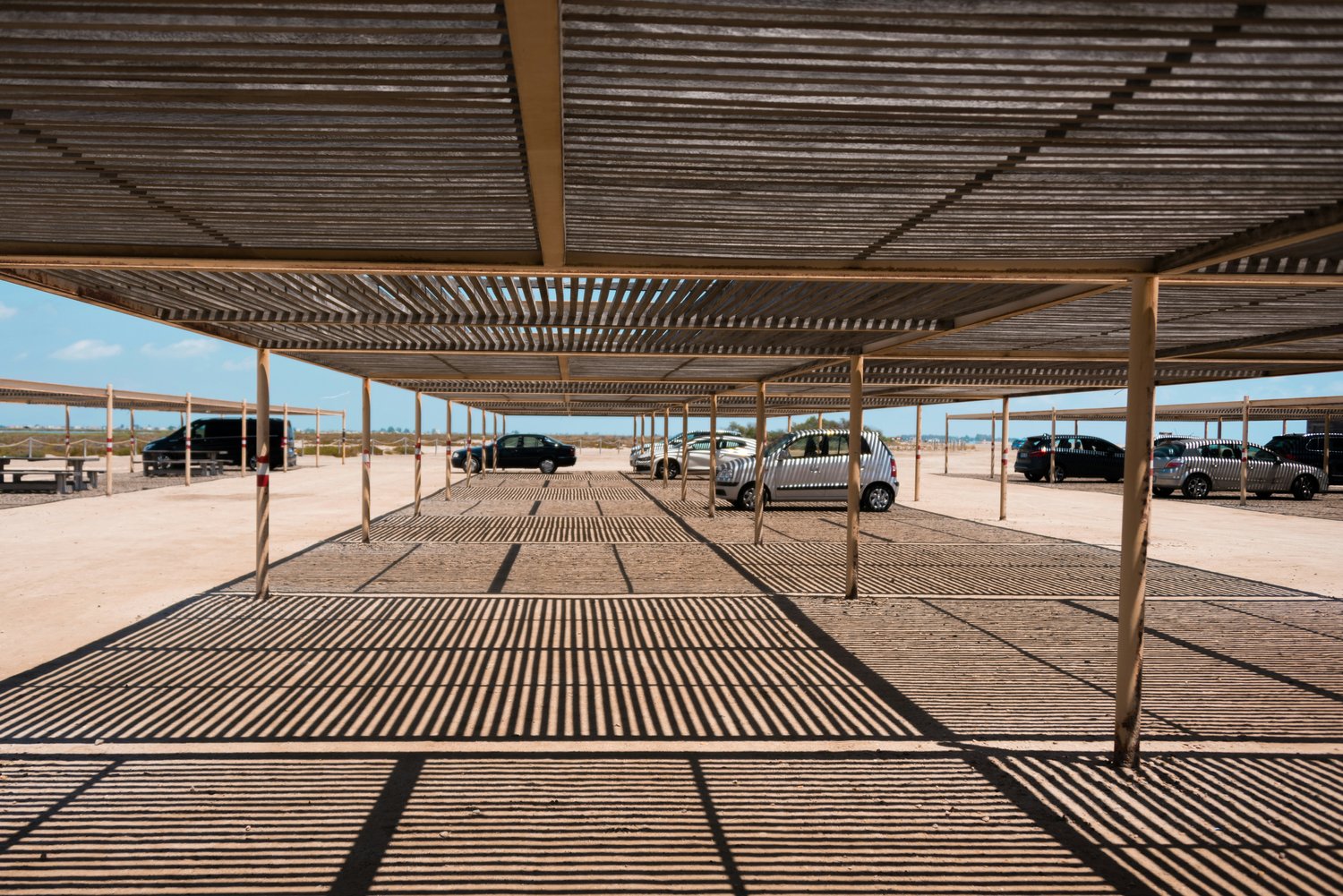Image: https://unsplash.com/photos/a-parking-lot-filled-with-lots-of-parked-cars-VYBeVSnLYjA
In today’s world of rapid technological advancement, the fusion of sustainability and precision engineering is not just desirable, it’s necessary. As cities expand and technology evolves, the demand for smarter, cleaner, and more efficient solutions continues to grow. Among the innovations leading the charge are carport solar systems and fibre optic gyroscopes (FOGs). At first glance, these might appear to belong to entirely different realms, one grounded firmly in sustainable energy, the other in high-level navigation and instrumentation. But both play a crucial role in shaping the future of how we live, move, and power the world around us.
Carport Solar: Making Shade Work Smarter
Carport solar systems are a modern reimagining of a familiar structure. More than just a shaded area to park your car, a solar carport integrates photovoltaic (PV) panels into its roof, turning a static structure into an energy-generating powerhouse. As the drive towards renewable energy intensifies, these solar canopies are emerging as practical solutions for homes, businesses, and public car parks alike.
Unlike rooftop solar, carports don’t require an existing structure to be effective. They can be placed strategically to maximise sun exposure and optimise energy output. For property owners, they provide multiple benefits: shaded parking, weather protection, and a reduction in energy bills all while contributing to a lower carbon footprint.
Beyond private homes, commercial and municipal installations are becoming increasingly common. Shopping centres, office parks, universities, and transport hubs are using solar carports to offset electricity costs and showcase their commitment to sustainability. When combined with battery storage or electric vehicle (EV) charging stations, carport solar systems transform into fully integrated green energy solutions.
The Precision of Fibre Optic Gyroscopes
While carport solar systems deal with capturing and distributing energy, fibre optic gyroscopes operate on an entirely different plane literally. These devices are at the cutting edge of navigation and positioning systems. Used in aerospace, marine, military, robotics, and even autonomous vehicles, FOGs measure rotational movement with extraordinary accuracy.
Traditional gyroscopes relied on spinning masses. Fibre optic gyros, by contrast, use the interference of light within coiled optical fibres to detect changes in orientation. The result is a system with no moving parts, no mechanical wear, and a level of precision that mechanical solutions can’t match.
FOGs are essential in environments where GPS isn’t reliable underwater, underground, or in space. They help submarines maintain orientation without surfacing, enable aircraft and spacecraft to navigate vast distances, and assist advanced robotics in staying balanced and on-course.
As our reliance on automation and autonomous systems grows, so too does the importance of robust internal navigation. Whether for self-driving cars, unmanned drones, or mobile industrial robots, the ability to track position and movement with extreme accuracy is no longer optional; it’s essential.
Common Ground: Innovation, Sustainability and Infrastructure
Despite their differing functions, carport solar systems and fibre optic gyroscopes are both at the forefront of innovation in infrastructure. They solve different problems, one focused on sustainable energy production, the other on high-precision motion sensing but both represent forward-thinking responses to the demands of modern society.
One of the most important common threads is efficiency. Solar carports capture energy from a surface that would otherwise be idle. FOGs detect minute motion changes with incredible accuracy and no moving parts, reducing the risk of failure. These aren’t just better versions of old technologies, they are transformative improvements that open up new possibilities.
There’s also a shared emphasis on integration. Carport solar systems are often part of a wider energy ecosystem, linked with EV chargers, grid storage or smart home management. Similarly, fibre optic gyros are components in larger guidance systems, enabling precise control in everything from aviation to renewable energy infrastructure such as wind turbines.
Even in application, these technologies are starting to intersect. Imagine a future where solar-powered carports not only charge electric vehicles, but where those vehicles use FOGs to safely navigate busy roads autonomously. Energy generation and intelligent motion control, working in parallel, are forming the backbone of tomorrow’s mobility solutions.
Sustainability and Intelligence in Action
The shift toward renewable energy and autonomous navigation is not just technological, it’s philosophical. Both carport solar systems and fibre optic gyros demonstrate a commitment to sustainable progress. They show that we can create technologies that are not only high-performing but also environmentally and socially responsible.
A solar carport reduces reliance on fossil fuels and provides energy where it’s needed most, close to the vehicles that will use it. A fibre optic gyro enables efficient transport, exploration and automation without the bulk or fragility of traditional systems. Both reflect an increasing awareness of the importance of resilience, independence, and long-term value.
Looking Ahead
As we look to the future, it’s clear that innovation in infrastructure, whether grounded in energy, data, or motion is no longer a luxury. It’s a necessity. Solar carports and fibre optic gyroscopes may serve very different sectors, but they both exemplify the kind of smart, efficient, and adaptable technology we need more of.
They remind us that even the most routine parts of our daily lives: parking our car, turning a corner, or using electricity can be made smarter and more sustainable. As we continue to seek out solutions that balance progress with preservation, these technologies will play a pivotal role in helping us navigate the complexities of the modern world.



